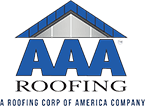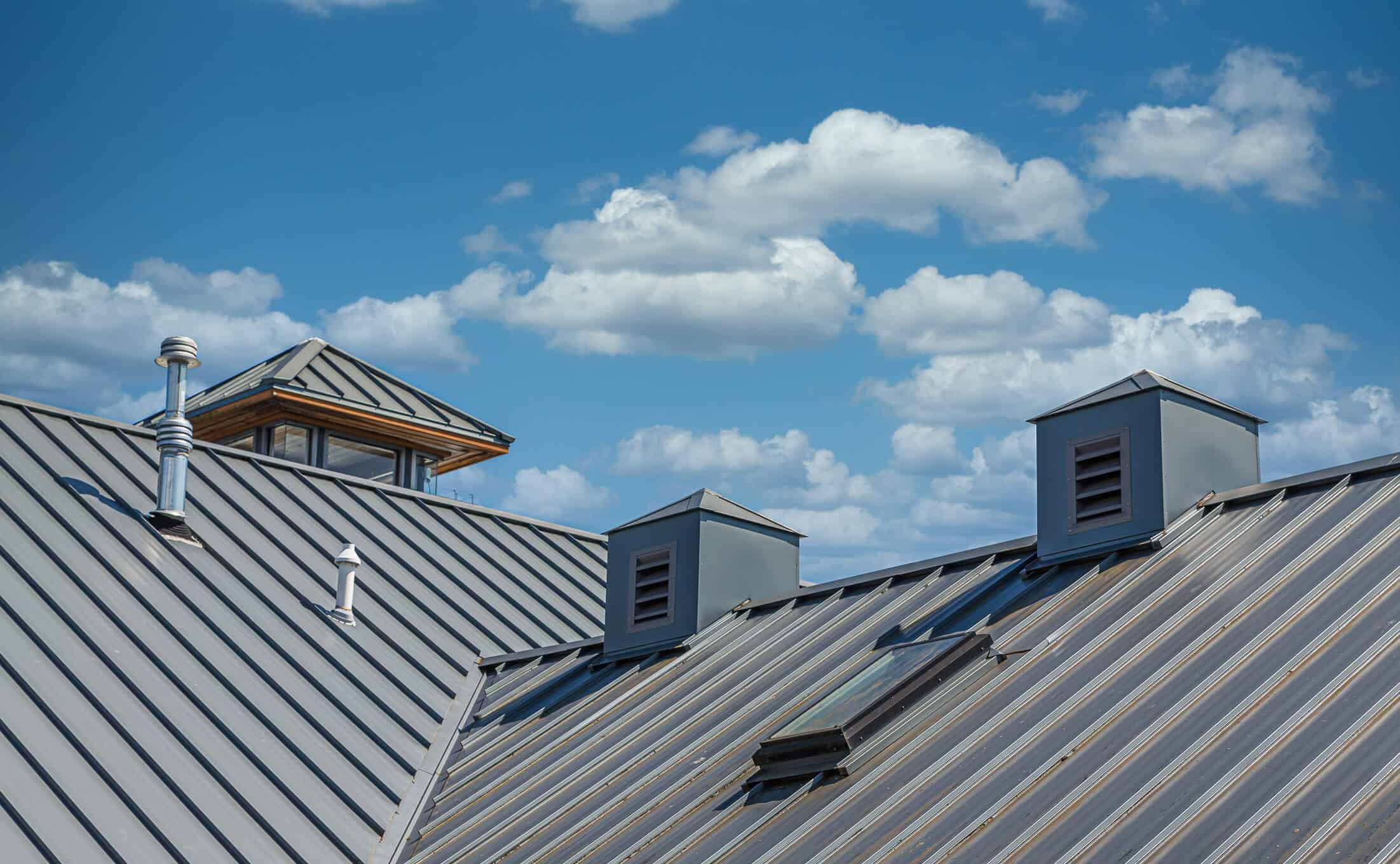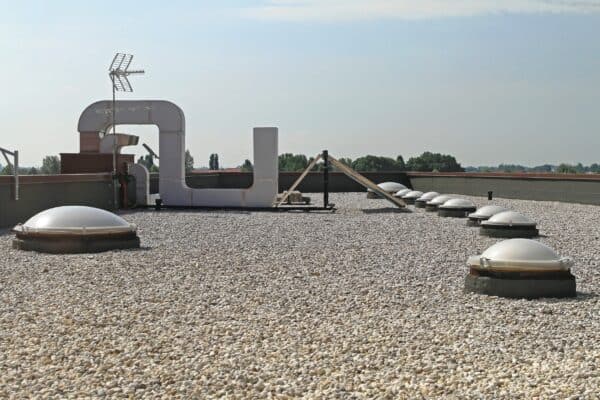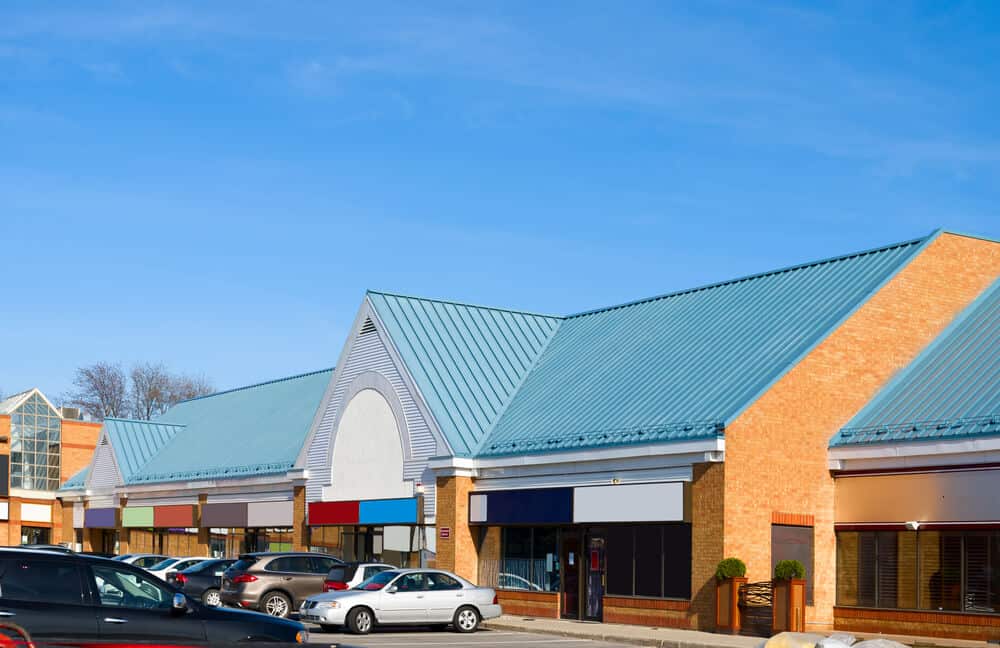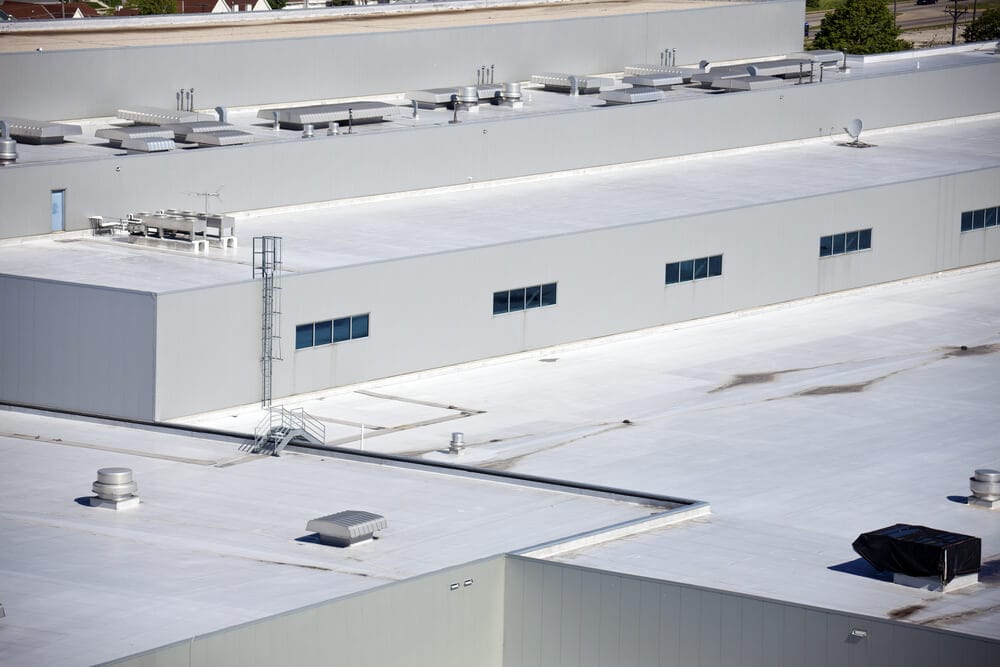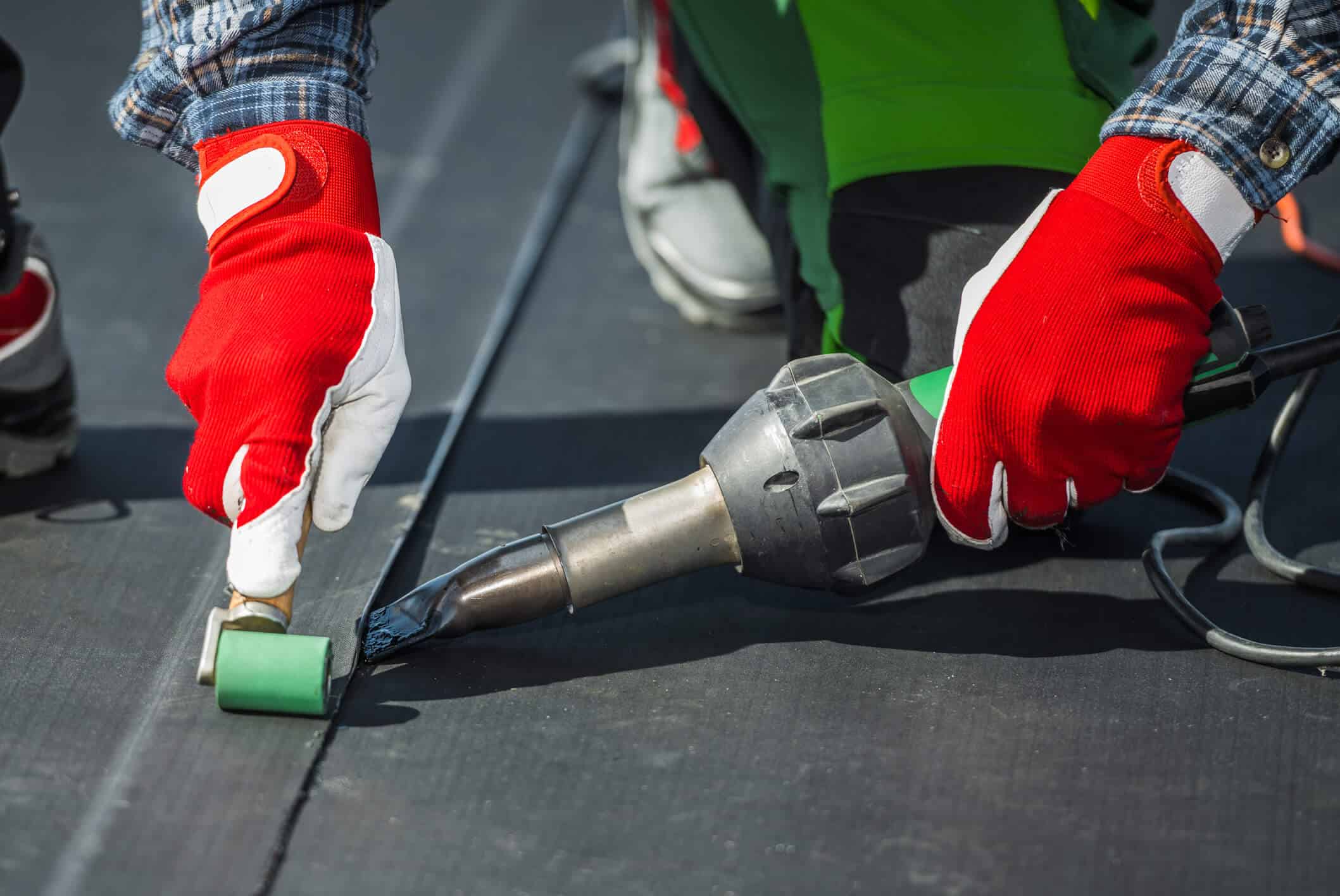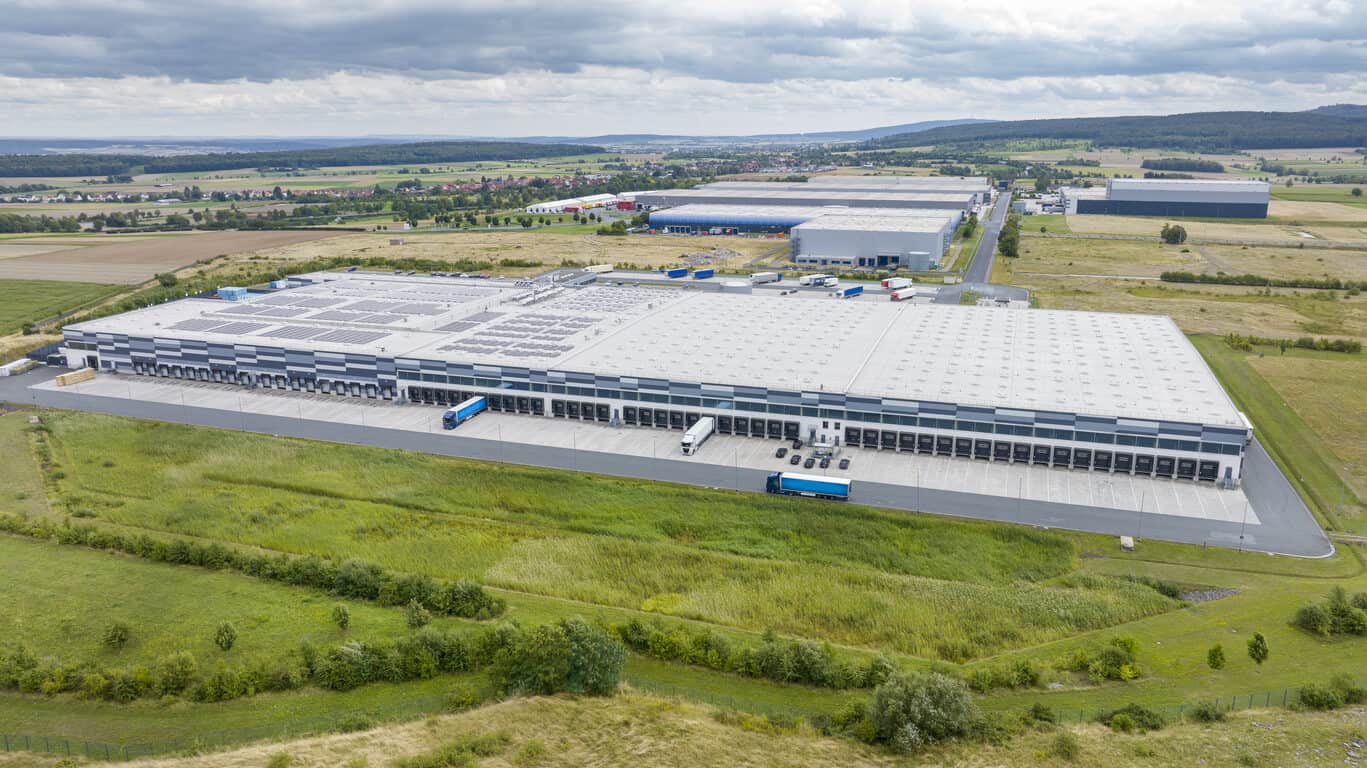You have a lot of options when it comes to commercial roofing materials. However, selecting the right one requires in-depth knowledge of industrial roofing types and the structure itself. Here’s a primer on types of commercial roofing options. We will outline the pros and cons of each system.
Contents
Single-Ply Roofing Materials
Single-ply roofing systems consist of one layer of roof membrane. There are several different types, which are commonly referred to by their acronyms – PVC and TPO.
PVC (polyvinyl chloride) has been used since the 1960s on industrial and commercial flat roofs. TPO (thermoplastic polyolefin) is generally considered an improved version of PVC and another flat roof membrane called EPDM. But both TPO and PVC are designed to be flexible, as the single-ply systems conform to the shape and movement of a commercial roof.
Single-ply roofing systems can be fastened or adhered in several different ways.
Benefits of single-ply commercial roofing materials
Of course, each type of single-layer roofing system has pros and cons, but here are the general benefits of PVC and TPO roofs.
- Weather resistant
- Flexible
- Light-colored surface helps reduce AC usage during hot weather
- Resistant to chemicals and oil
- Environmentally friendly
- Lightweight
- Odorless
- Watertight seams
As you can see, there are many benefits of single-ply roofing membranes. However, problems can occur if this commercial roofing system surface is punctured. PVC roofing does not always stand up well to foot traffic.
Also, a TPO and PVC roof must be installed appropriately. Gaps can occur between the membrane seams if they are not correctly installed.
Built-Up Roofing Systems
Built-up roofing (BUR) is one of the oldest types of low-slope roofs – having been used on industrial and commercial buildings for more than 100 years. BUR systems are field assembled using three to five roofing “felt” and asphalt layers. (The layers of asphalt make the roof surface more water-resistant.) Also, BUR manufacturers now produce white-surfaced materials to meet cool roof requirements.
Benefits of a BUR roofing system
BUR systems have long been used on flat roofs for the following reasons:
- Multiple layers offer enhanced protection and can withstand foot traffic
- Stands up well to extreme climates and a wide range of temperatures
However, of all the commercial roof types, a BUR system has higher maintenance requirements than competing systems.
Modified Bitumen Roofing
A modified bitumen system is similar to a BUR system except that the asphalt used in these systems has been modified by adding synthetic rubberized polymers. The polymers provide increased resistance to brittleness and increased sheet elasticity in cold temperatures. This addition increases the life of the commercial roof system.
Benefits of a modified bitumen roof
A modified bitumen roof has similar benefits to a BUR roof.
- Withstands both high and low temperatures.
- Offers enhanced protection and can withstand foot traffic
- Reflective granules are available to achieve a more reflective surface.
ModBit roof systems do not stand up well to pooling water. Also, the source of leaks is difficult to detect with such commercial roofing systems.
Metal Roofing
There are different types of metal roofing systems. The architectural metal system requires a structural supporting deck underneath the metal with a watertight underlayment. A structural metal system does require a supporting deck. Metal roofs also have different fastening systems. Hidden fasteners are the most popular because they don’t require screw holes, which may eventually lead to surface leaks.
Benefits of a metal roofing system
Metal roofing is one of the fastest-growing segments in the commercial roofing industry. Here are some reasons:
- Large selection of styles, colors, and finishes
- Long-lasting roof system
- Fire resistance
- Can withstand heavy winds and snow
While metal roofing has many benefits, they are noisy and a more expensive commercial roofing option.
Talk With an Expert About Your Industrial Roof Project
It’s crucial that you talk with an expert before you decide on a commercial roofing system. AAA Roofing is the premier commercial and industrial roofing company in San Jose, Riverside, Los Angeles, and throughout California and Idaho. We will evaluate all your commercial properties and show you how you can reduce maintenance and energy costs by installing the right type of commercial roof.
Contact us today to learn more about roofing options – including roof coating materials – to protect your investment.
Key Takeaways of Industrial Roofing Types
- Installing single-ply roofing material is a great way to improve the energy efficiency of a commercial building.
- Built-up roofing systems have multiple redundant layers.
- Modified bitumen roofing systems offer more flexibility than older BUR systems.
- A metal roof is attractive and fire-resistant.
